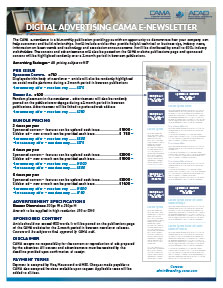Allergen Awareness: Risks, Causes and Avoidance
With businesses continuing to recover, risk mitigation needs to enter our radar once again. While incidents of allergy issues are not even in our top ten at the moment, we need to ensure we arm our team with training and education to help reduce risks.
Virtually all of the products we sell in vending and micro-market environments are packaged and labelled with both ingredients and allergen declarations so that customers have the right information to make an informed decision. As a food service provider, we still have an obligation to ensure that products are available using safe and minimal risk equipment and systems.
What Is an Allergy?
An allergen is a substance that causes the allergic reaction (for example peanuts) which causes the body to respond negatively to substances that are normally harmless (for example: runny eyes, hives). When someone who ingests or comes in contact with a food item (or substance) they are allergic to, the body’s immune system reacts negatively, and in some cases, the reaction can be fatal. We must remember this is a marked difference between people that suffer from food allergies versus a food intolerance.
What Is a Food Intolerance?
A food Intolerance is a person’s inability or difficulty to digest a particular substance. For example, celiac disease is caused from the gluten found in wheat & wheat products, and a lactose intolerance is caused by the milk protein found in dairy products. While some of the symptoms for an intolerance may be similar to an allergy, the body reacts differently, and the risk is much lower (in most cases).
Which Foods Are Most Commonly Considered an Allergen?
It is important to note that any food can cause an allergic reaction, however 80% of food allergies involve dairy wheat, soy, eggs, peanuts, nuts, fish or seafood. Note: Peanut allergies are the leading cause of anaphylaxis.
How Do Allergens Get Into Our Food?
There are two common ways that allergens get into our food. They are either an ingredient, or there has been cross contamination.
In Canada virtually all packaged products now contain allergy declarations if one of the most common allergens is contained in a product. As long as we are purchasing / selling products in the original packaging as designed for resale, the risk is greatly reduced. Ensuring packages are sealed and not broken prior to displaying will provide a comfort level that your offering is safe and secure. While quite minimal in the vending and micro market business, there is still a potential for cross contamination to occur which can increase the risk.
What Is Cross Contamination and How Can We Avoid It?
The transfer of substances from one item of food to another by means of a food or a non-food medium such as equipment, utensils or human hands. A caution to pay attention to is a situation where a package gets accidentally ripped by a staff member and someone comes in contact with an ingredient or product that poses a high risk. In this case a good practice is to train and educate the staff to remove and or/dispose of a product that has been opened, wash and sanitize their hands immediately, and wash the area (counter, display rack, or shelf in a vending unit) before handling any other products. Proper cleaning procedures can always assist in reducing the risk of cross contamination.
Ensuring you have taken the time to train and educate staff on allergy risks in your business will help to ensure that your customers trust that you are delivering more than just products…you are also delivering peace of mind.
Need assistance in training your staff on allergen awareness to better support them in answering client questions? Let Complete Purchasing Services (CPS) vending (formerly Univend) help you to find the perfect supplier partners to ensure that your offering includes allergen friendly options.
About the Author:
Brian Emmerton is a Registered Dietitian and the Vice President and General Manager of Complete Purchasing Services Inc, a leading supply chain solutions provider for hospitality and non-commercial clients in Canada. Brian has been working in foodservice and consumer affairs for over 30 years to help clients keep up to date on consumer trends and opportunities that help drive revenue and repeat business. Learn more about Complete Purchasing Services by visiting eCPS.ca.

(1).png)

%202023.png)


